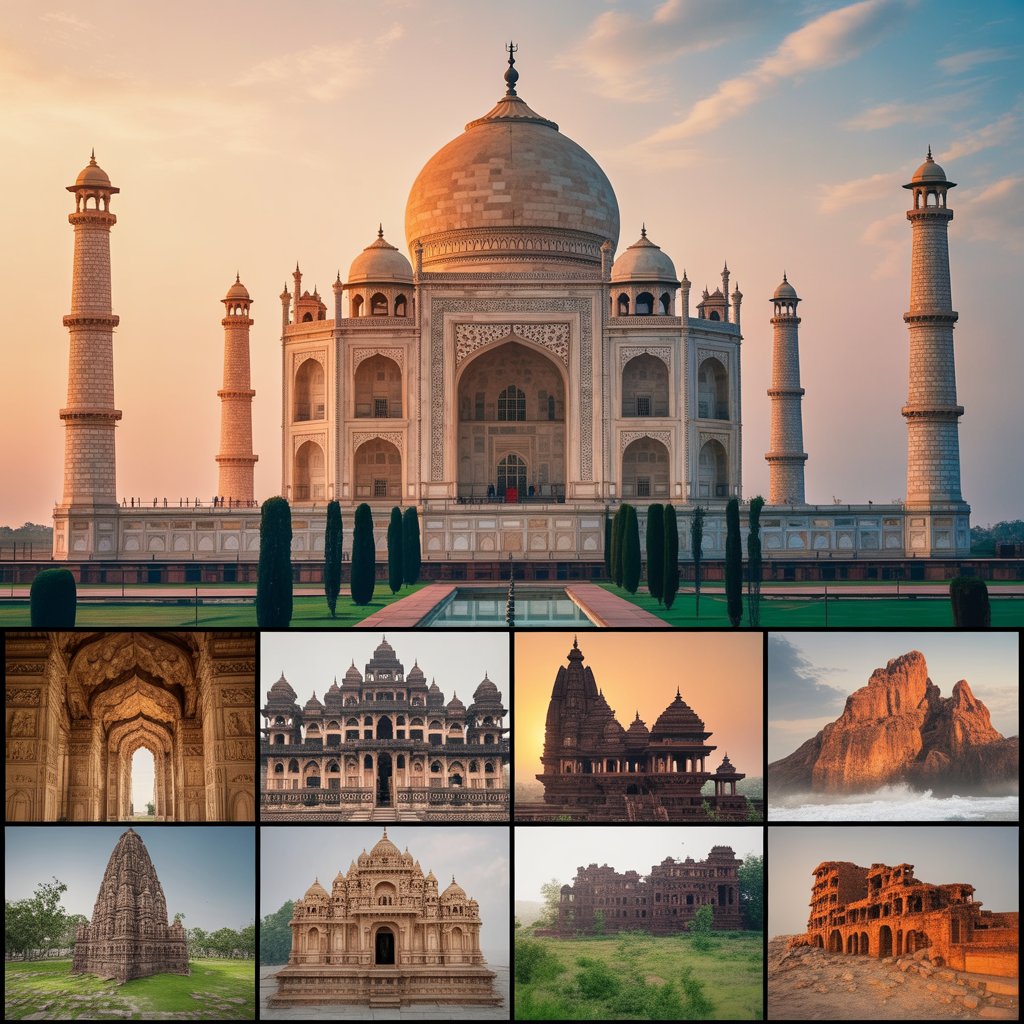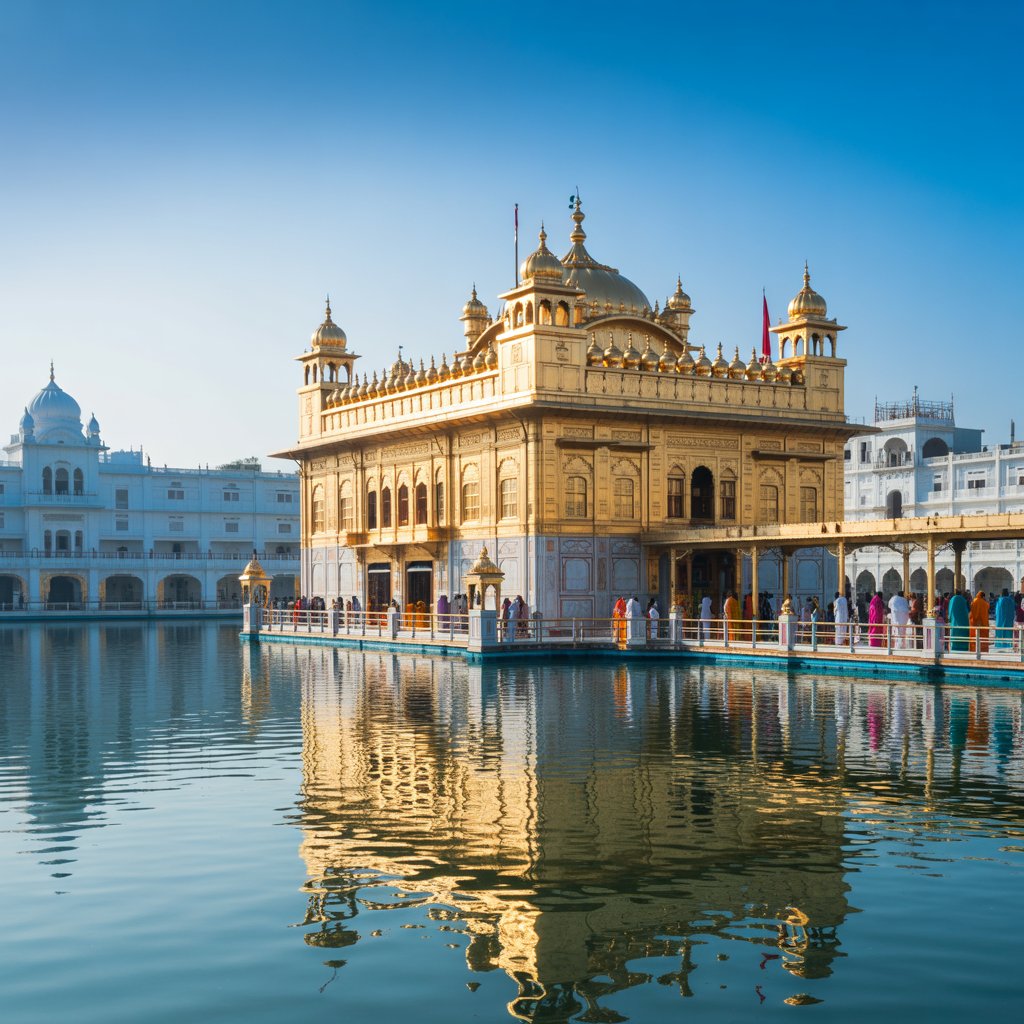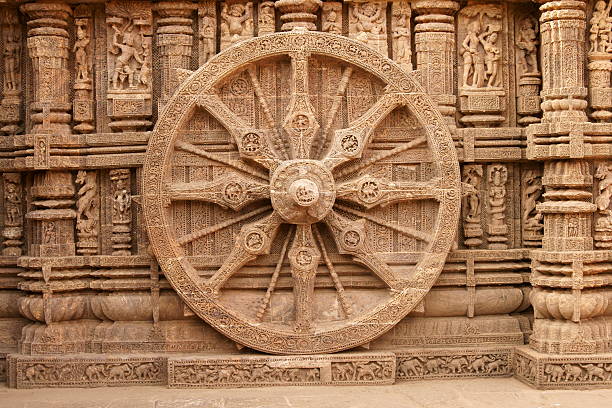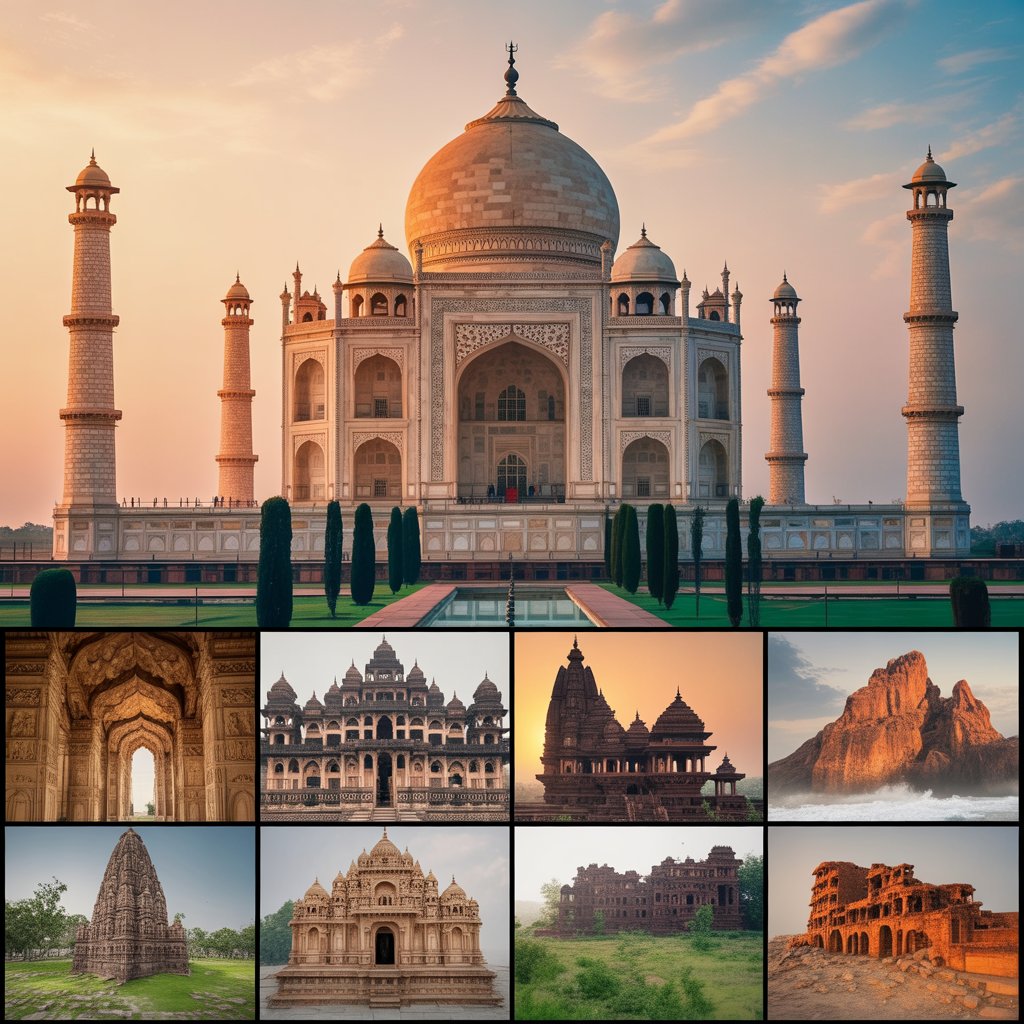India’s cultural and historical heritage is vast, with monuments and landmarks that span centuries of artistry and innovation. Among these treasures, the 7 Wonders of India hold a special place, each telling a story of architectural mastery, cultural importance, and timeless beauty. From majestic palaces to ancient temples, these wonders are living testaments to India’s glory.
In this guide, we’ll explore each wonder’s history, significance, and travel tips so you can experience them in all their grandeur.

What Are the Seven Wonders of India?
- Taj Mahal – Agra, Uttar Pradesh
- Golden Temple – Amritsar, Punjab
- Hampi – Karnataka
- Sun Temple – Konark, Odisha
- Khajuraho Temples – Madhya Pradesh
- Nalanda University – Bihar
- Gomateshwara Statue – Karnataka
All these wonders possess their own distinctive historical value. Let’s explore them in detail.
Taj Mahal – Agra, Uttar Pradesh
- Location: Agra, Uttar Pradesh
- Built In: 1632-1653
- Architectural Style: Mughal architecture
Visitors can observe the Taj Mahal transform its colours throughout the day because it looks pink during morning hours, followed by afternoon white and nightfall golden. Guests can find suitable hotels near Taj Mahal Agra when booking accommodation.
Golden Temple – Amritsar, Punjab

- Location: Amritsar, Punjab
- Built In: 1581-1604
- Architectural Style: Sikh architecture
The most enormous community kitchen in the world operates at the Golden Temple. It provides free meals to more than 100,000 people every day. Visitors experience great admiration for the temple as its gleaming golden dome illuminates flawlessly when the sun shines.
The Hampi Temple Complex In Karnataka

Hampi is a temple town in India’s Karnataka state dotted with fascinating ancient Hindu temples and shrines. During its peak time, Hampi was one of the wealthiest cities in the world. Hampi was part of the ancient Indian kingdom of Vijayanagara whose rulers were known for their love of arts and culture, thirst for knowledge, and efficient rule. The Virupaksha Temple, the Queen’s Bath, the Vittala Temple Complex are some of the most notable temples and monuments in Hampi. The place inspires the awe of all who visit Hampi and is thus rightly classified as one of the 7 wonders of India and a UNESCO World Heritage Site.
Sun Temple- Konark, Odisha

An architectural magnificence dedicated to Surya, the Hindu Sun God, stands as the Sun Temple at Konark. This temple represents Kalinga architecture through its design, which resembles a massive chariot.
- Location: Konark, Odisha
- Built In: 13th century
- Architectural Style: Kalinga architecture
The temple features 12 gigantic stone wheels, which represent the 12 months of the year according to their architectural design, which replicates a chariot. This temple reaches seven wonders status because of its elaborate decorations and impressive design.
Khajuraho Temples – Madhya Pradesh
All visitors come to the Khajuraho Temples to admire their remarkable and notable sculptures alongside their depictions of love for music and dance themes. The temple buildings follow the architectural principles of the Nagara style.
- Location: Madhya Pradesh
- Built In: 950-1050 AD
- Architectural Style: Nagara style of Hindu temple architecture
Only 20 out of the original 85 temples have survived the test of time. The temples are divided into Hindu and Jain temples. They showcase India’s religious tolerance and artistic excellence.
The Nalanda University In Bihar
A large Buddhist monastery and a world-renowned center of learning between the 7th century BCE and 1200 CE, Nalanda well deserves to be one of the 7 wonders of India as well as a UNESCO World Heritage Site. Nalanda is located about 95 km from Patna, the capital city of India’s Bihar state. Nalanda is as one of the most famous universities in ancient India that was inspired by the highly organized methods of Vedic learning. The university flourished during the reign of the Gupta Empire and later during the rule of the emperor of Kannauj, Harshavardhana. Nalanda during its peak time was attended by scholars who came from near and far including knowledge-seekers from China, Korea, Central Asia, and Tibet. Sadly, it the University was ransacked and destroyed by a Muslim army of the Mamluk Dynasty in 1200 CE and was eventually abandoned and forgotten. Many years, later, the Government of modern India revived the site, and today it attracts a large number of tourists to the Indian state.
The Monolithic Gomateshwara Statue In Karnataka
The Gomateshwara is a giant statue of Bahubali, a revered figure of the Jain community of India. Bahubali was Rishabhanatha’s (the first Jain tirthankara) son. Bahubali is said to have attained moksha or salvation by meditating while standing motionless for a year, till climbing plants grew around his legs. The giant Gommateshwara statue was thus built in ancient India to show respect to Bahubali. It is a 57-foot monolith that is located on a hilltop in Shravanabelagola in the Indian state of Karnataka. The statue was built by Chavundaraya, a minister and commander of the Ganga Dynasty at about AD 981
Conclusion
The 7 Wonders of India are more than just tourist attractions — they’re living chapters of the nation’s story, each with its own cultural heartbeat. Whether you’re a history buff, a photography enthusiast, or a spiritual seeker, these wonders offer unforgettable journeys into the soul of India.



